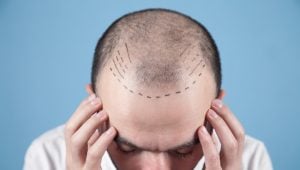More than fifty per cent of adults will suffer from alopecia or hair loss at some stage. But hair transplants have brought relief to many. Early FUT, also known as FUSS (Follicular Unit Strip Surgery) procedures left patients with visible donor scars on the back or sides of the head. These drawbacks have been overcome by the introduction of the FUE (Follicular Unit Extraction) hair transplant technique. Modern technology provides surgeons with additional support, such as motorized handheld devices and image-guided precision robotic hair transplant systems, such as the ARTAS Robotic Hair Restoration system, available to help with the harvesting and grafting of hair.
Medical Travel Market talks to some hair transplant providers in the UK to investigate the benefits of robotic hair transplants. We look at the latest robotic hair transplant surgery and question if it can outperform the conventional manual FUE hair transplant?
Robotic hair transplant systems
The ARTAS fully automated robotic hair transplant system is a significant advancement in the use of FUE technology, according to the manufacturer. This robotic system automates two of the critical steps in a hair transplant, namely the harvesting of the follicular unit and the creation of the recipient site.
“Robotic hair transplanting has a good reputation among hair restoration techniques,” according to Prof. Dr Fuat Yuksel from Longevita. “The ARTAS system improves the performance of crucial steps in the hair transplant procedure. It performs faster and more accurate harvesting of hairs. It also dissects the grafts more precisely than the human hand. On the surgical site, its artificial intelligence creates ideal patterns for the recipient site to make the results look natural and virtually unnoticeable.”
Precision, speed and reduced risk of follicle damage
Robotic FUE hair transplant is claimed to be less invasive. The system utilizes artificial intelligence algorithms and precision robotics to provide a more effective solution.
Minimal movement lessens the risk of damaging the follicle. When using a manual punch, the motion is oscillatory, whereas with motorized extraction it is rotatory. Robotic extraction is also faster than manual extraction.
However, the surgeon needs to know how deep to bury the punch to prevent ‘buried grafts’. These sometimes happen with a manual punch, but they are particularly common in a motorized graft when the operator is inexperienced. Feeling the tissue resistance helps the surgeon to judge the depth and adjust their force and movements. This is not currently possible with a robotic system.
“Robotic hair transplanting reduces the donor site harvesting time and damage of the follicular units during the extraction process” Prof. Dr Fuat Yuksel explains. “The procedure is quicker than manual hair transplanting. With an experienced operator, the results should be as good as in a manual FUE hair transplant. Most importantly, the providers are less liable to human error, and they can focus on the aesthetics, as the robotic device will take care of the technical part of the process.”
“The ARTAS system assists physicians with difficult, repetitive, and accurate movements,” Prof. Dr Fuat Yuksel continues. “But it has some disadvantages. The surgeon must assess whether it is right for a particular patient, as the technique is not suitable for all donor sites. It is also more expensive than a hand-operated FUE hair transplant.”
Automation advantages
Automation is helping with other aspects of hair transplant surgery too. “We use a Suction Assisted System called SmartGraft,” Andrew Cooper of Elite Hair Restoration Surgery explains. “The grafts are extracted under suction and stored in a refrigerated galley pot which is suspended and intermittently sprayed with chilled Hartman’s solution. The machine counts each extraction, it has a time log, sprays the grafts every 2-7 minutes and has multiple sized punches for all hair types. It is not a Robot, but it’s certainly revolutionary.”
Andrew Cooper is sceptical about the advantages of robotic surgery. “At this current time, I think robotic surgery is not better than a surgeon’s hand. I think the technology is advancing, and that one day it will be better than a surgeon, but it has not reached that stage. I know clinics that have robotics systems, but they hardly use them. I would say the percentage of treatments carried out by robots does not reach 1% – the costs are simply too high.”
Evaluation for hair loss is essential
Evaluation of a patients hair loss pattern and personal requirements by an experienced surgeon is critical to the eventual success of the procedure. The number of follicles to be harvested varies for each patient due to differences in scalp and hair characteristics. A good evaluation will determine the scope of each session, where to harvest and transplant, and the likely outcome. Deciding on the best extraction method for each patient, be it manual or robotic, requires skill and experience.
The crucial advantage of the modern FUE hair transplant technique is that it delivers good, lasting results without visible scars when the hair is trimmed short. Still, it requires a stable and experienced surgeon’s hand, and the learning curve to operate is rather steep. Modern technology is helping the process with motorized punches and robotic machines, but it is not yet in a position to replace the experience of the surgeon.















